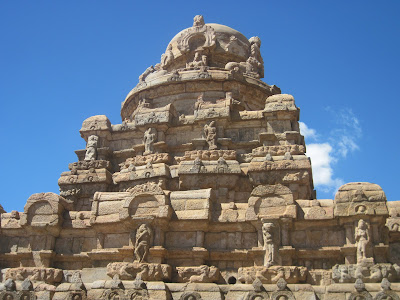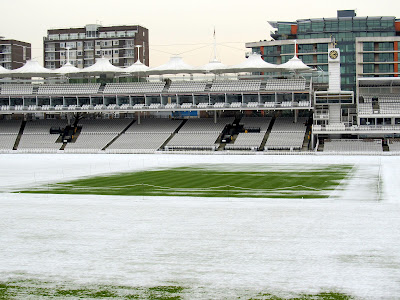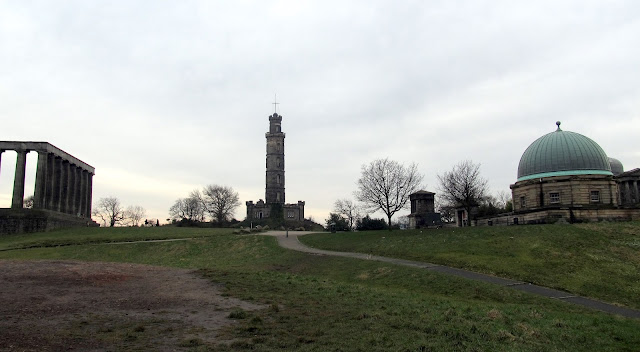Sometimes
it just seems crazy for one to be willing to go see some unknown, how much you
crave for some sort of escape from human company, and rush to obscure places
searching, searching for something that you know can be disappointing, might
not even be there, and could all be a wild goose chase, but you still persist
for that one good snap.
NO,
this one wasn’t it, though I do like the emotions, the deepness, the character
displayed in the same, I was talking more on the likes of this one.
OR, this one.....
Was
browsing for ruins on the net (apparently those are the only places that seem
to attract me anymore, a passion for the ancient if you will, my psychiatrist
words it differently though) in South India and chanced upon this one called
Narthamalai someplace off Trichy. So with nothing else to do on a Friday night,
the ticket was booked at 7 p.m., and the bus was duly boarded at 11 pm (not
without the usual running at the last minute to the moronically out of the way
Koyumbedu bus stand, which has become a sort of tradition now). The sleeper
(yes, there was enough space to lie down) made good time to reach Trichy at 6
in the morning, booked a room with the famous VijEy hotels (yes, the
brandname is with an E). A shower and a couple of idlis later (I know, I
would’ve preferred some paranthas cooked by mom, but beggars can’t be ……)
was out asking around the bus stand for some place whose name most people
gawked at. Well I had to ask for the bus to Pudukottai (I’ve become adept at
finally pronouncing these names right now), and finally I was seated in the bus
for the 45 minute ride. The weather gods were gentle, as there wasn’t much
humidity in the air, and the sun shining bright. No perceptible signs of a bus
stand are visible to announce the small town of N (don’t expect me to write
that name again and again).
The
small crossroad bus stand is one I’m familiar with a lot now. Just a couple of
lonely souls standing here and there, a dainty corner shop, and small country
roads branching out as an offshoot in either direction to the main road. To be
fair, there was more than one shop here, and the country roads were laid with
tarcoal, even a small sign announcing a Siva temple somewhere down the road.
The path is dotted with Banyan trees, with the nice vines hanging out, reaching
out for mother earth.
I carried on the path
I had seen already, and sure enough, there is the temple ruin hiding behind the
gentle slope. The hilltop is no more than 200-300 meters long, but if you have
stayed as well in shape as me, then you’d be huffing in the sun as well. The
layered rocks are a treat to walk on, and with not a soul in sight (something
tells me not many people come here), the land is for me to conquer easily. The
wind is thankfully blowing, and already filled up with a couple of bottles of
water, the going is easy.The
base of the hill is laced with a few haystacks, reminding one that he is in the
Indian countryside, a countryside where almost every thatched roof I looked at
had a dish antenna, but the countryside nonetheless. On the walk up, you can
also see the lotus pond, probably looks better when it’s raining, but the
lotuses are still there.
Midway through to the hilltop, there’s this small
rectangular structure housing a small Ganesha statue. Beside this are small
depressions in the hill which are filled with water, even without much rain.
Incidentally, had seen a few pics on the net which showed the expanse before
the hill occupied by a nice big lake, but in this weather all I see is a comparatively
little watering hole, with the goats enjoying their bath. Was tempted to join
the beasts, but the lure of the partially hidden ruins was just too good to
resist.
Once the rock formation slopes down a bit to the other side, you get
the first full glimpse of this architectural beauty. Fine, it might not be as
majestic as some others, neither is the artwork something over which wars would
be fought, but it has something that simply cannot be described; nestled in a
small pocket of the hill, it just gels in so beautifully with the surroundings,
the stones on the temple mimicking the color of the hill like a silent
chameleon over the ages, sitting mute right there, withering away with time.
Not
a soul in sight I sat there to catch my breath, under the shade of the temple.
Sadly its locked up, so all you can see is the façade, the Shiva cave in front
is also locked up. Nice of them though to put out some of the statue remains,
some looking like a weird sphinx, others just rows of animals I can’t really describe.
The main structure of the temple is surrounded with 8 smaller shrines, and a
nandi to boost.
Most of them empty, with the lone diya inside suggesting
someone once in a while comes in and still offers homage to the deity. The poor temple has probably seen better days, but like most other places of old, its succumbing to the elements. The notice from the ASI does mention some work being done to restore it, but that's just what it would be RE-store, not preserve.
The wall
partition on the outside overlooks the side of the hill, and provides a nice
vantage point, sit here and gaze into the horizon for hours on end. Just a
stones throw away are the other hillocks of the region, and the lazy slope of
every one of them seems easy enough for even a novice to traverse. Have to try
out all of these hills another day, maybe one that does not leave sunburns on
my skin! The best part is to sit atop one of these hills, the one that has
almost a vertical fall on one side, now that is a view.
Now
that the temple complex had been explored, I soldiered on to get to the top of
the hill, and rightly so. The top of the hill provides one with a really nice
shot of the entire temple complex, have always been a fan of the aerial shots
that can provide a view from the top, take in the entire scene in one full
swoop, and not just the side profile of it.
After a couple of shots from the top, headed down to base, stopping by here and there to horse around. The
vegetation consisted of a lot cacti, big ones rather, and clicked one with
a human being for the perspective.The
walk down wasn't that bad either, it was the walk back to the bus stop, filled
with some stops to look at the local shops, and a lot of hydration.
A couple of
hours, a quick meal, a shower, and 2 bus rides later I landed up at Tanjore.
This place wasn't really on my wish list, but had heard a lot of the big
temple, and so decided to visit it as well. Well, the Brihadeeswarar Temple, or
the big temple as it’s called did not disappoint. It was massive, with the
conical shaped high rises making up for some pleasant viewing. Supposedly, it’s
the biggest temple in India, and together with the other 2 Chola temples at
Darasuram and Gangaikonda Cholapuram, makes up ‘the great living Chola temples’.
The temple, made of Granite, is indeed a treat, there’s nothing too great in
the sculptures in terms of artwork methinks, but it’s this simplicity on such a
grand scale which seems to mesmerize one. The only harrowing ordeal was when I
decided to visit the main statue as well – a huge Shiva ling (not to hurt the
religious sentiments of anyone, but as a good friend of mine describes it “its
just a d***”). That turned out to be 20 minutes of standing in a cramped
column, sweating profusely with hundreds of devotees packed together shoulder
to shoulder, and moving at a snails pace inside the not ventilated rooms.
With
the experience over (I’m not a fan of the religious sites, or the activities) I
switched over my attention to the murals on the inner side of the outer wall.
The wall is lined with Shiva lings – all of which seem just a bit different,
some a bit more circular than the others, but the paintings are the ones that
catch my attention- though most of them are crumbling away from the walls, they
still retain enough of their earlier glory, letting the passerby know that once
the artists took pride in their work. I can’t really decipher the sequence of
events that these paintings depict, to me they are just remnants of an era when
man had faith, and probably also an imagination that should put the avatars and
the likes to shame.
The
outer wall of the main sanctum is peppered with different dance poses (Bharathanatyam,
Wikipedia tells me), and details the pains that were taken to carve it out on
the Granite.The smaller Ganesha shrine is another one not to be missed, well,
there are quite a few other sculpted delights here, so just posting the snaps. The
Nandi at the entrance is also carved out of a single stone, and the dark shade
of stone shine out nicely in the late noon sun.
It
was quite difficult to take in a photo of the entire main shrine without the hordes
coming in the way, but I did manage to sneak in a couple with minimal human
intervention, and as always a couple with the sun in the background providing
the silhouette.
With a nice set of snaps in the bag and a splitting headache
from the heat, I’d say that was one hell of a way to spend a weekend.













































































